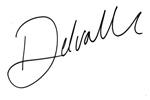It seems the U.S. is a tale of two economies.
The service sector, which makes up a large part of our economy, is going strong. The Institute of Supply Management (ISM) Non-Manufacturing Index rose in October to 59.1%. Anything above 50% signals an expansion.
Friends of mine — who include contractors, hairdressers and even IT techs — all say business has never been better. Most are expanding operations, in fact.
Manufacturing, on the other hand, is nearly shrinking outright. The ISM Manufacturing Index fell to 50.1% in October.
So what’s going on? Two things.
First, the slowdown in China and the emerging markets is certainly putting a damper on goods being sold overseas. If you take a look at the trade deficit in the U.S., you’ll find that exports are actually down 4% year-over-year. That gives you an idea as to how a recession abroad can hamper our manufacturing activity.
The second thing slowing down manufacturing is large inventories in stores. Over the last few months, we saw inventories zoom higher in many U.S. retailers and department outlets. While all this stuff is being made, it helps GDP. But after it’s made, the impact is minimal.
The only part of the manufacturing sector that is really doing well is car-building. Automakers sold cars at an 18.1 million annual rate in October. That’s up almost 10% from last year and signals that 2015 will be the best year for car sales since 2001.
Still, no matter how well auto manufacturing is doing, it’s not enough to save the general manufacturing sector. We’ll probably see third-quarter GDP revised lower, as a result.
Complicating matters are hints by Fed Chair Janet Yellen that interest rates may go up next month for the first time in years, while the European Central Bank (ECB) looks to do the exact opposite and loosen monetary policy further.
From Reuters:
The ECB surprised markets last month by raising the prospect of easing as soon as December. By contrast, with the U.S. economy in a buoyant state, the Fed delivered an unexpectedly hawkish message, boosting the chance that it will raise rates next month after keeping them near zero for almost seven years.
Together, these signals sent the euro down by more than 5 percent against the dollar in a matter of weeks, and this is unlikely to be the last sharp market move as a number of leading central banks act.
A Fed increase is likely to be followed by the Bank of England sometime next year as the British recovery gathers strength. But growth is anemic in the euro zone and slowing sharply in China, where the People’s Bank of China is already easing policy. The Bank of Japan and the Reserve Bank of Australia have also both flagged the potential for more easing.
This kind of monetary divergence is something we haven’t seen in a long time. It seems that for the last 15 years, monetary policy among the industrialized nations has more or less been the same.
With such divergent policies, I have no doubt we’ll see some fireworks. First up? The euro will probably break under a dollar in value. That’ll make European imports and vacations far cheaper. But it may also restrict our exports, too (which will hurt domestic manufacturing).
It’ll be exciting times, to say the least.
In the meantime, you can check out the portfolio here.
Nothing major to report. But as soon as something comes up, you’ll be the first to know.
Take care,

Charles Del Valle
Editor, Strategic Investment
